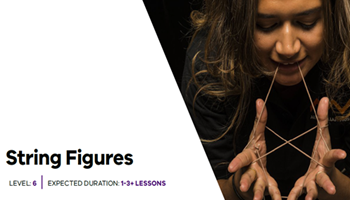Planning tool
Year levels
Strands
Expected level of development
Australian Curriculum Mathematics V9: AC9M6M04
Numeracy Progression: Understanding geometric properties: P5, Understanding units of measurement: P8
At this level, students explore angles on a straight line and angles within shapes. They identify the relationships between angles and use these to determine unknown angles and describe their reasoning. Students should be familiar with 90° and 180° angles, as well as other angles such as acute, obtuse and reflex.
Revise how to use a protractor. Model how to position the centre mark of the protractor over the vertex of the angle and align the baseline on the protractor with one of the angle rays.
Students should be encouraged to estimate if the angle will be greater than or smaller than 90°, then use the correct range of numbers (e.g. if an angle is greater than a right angle, the reading on the protractor will be 130°, not 50°).
Help students explore supplementary angles (two angles that add to 180°). By adding the angles, they will produce a straight line. Introduce complementary angles (two angles that add up to 90°, for example 30° and 60° add up to 90°).
Provide a range of situations that require using the properties of supplementary and complementary angles to find the size of unknown angles.
Teaching and learning summary:
- Model how to use a protractor.
- Encourage students to estimate the angle and compare to their measurement.
- Investigate supplementary and complementary angles.

Students:
- estimate, measure and compare angles in degrees
- measure angles accurately using a protractor
- describe angles using the terms define acute, obtuse, straight and reflex
- find the size of unknown angles using knowledge of supplementary and complementary angles.
Some students may:
- not understand the attribute they are measuring, misinterpreting the numbers on the protractor. For example, if students are unfamiliar with the sizes of angles, they may read an angle to be 73° instead of 107°. That is, they cannot identify that the angle is greater than 90° and is obtuse. Explicitly teach students to compare angles to the benchmark of a right angle. This often leads to students having less trouble with the protractor as they already know if an angle is greater or less than 90°.
- develop misunderstandings such as comparing angles based on the length of the rays. Model an angle that joins two lines of different length and extend lengths of lines to show that the angle does not change.
- confuse terms of supplementary and complementary angles.
The Learning from home activities are designed to be used flexibly by teachers, parents and carers, as well as the students themselves. They can be used in a number of ways including to consolidate and extend learning done at school or for home schooling.
Learning intention
- We are learning how to measure angles in degrees.
- We are learning how to use a protractor to measure angles.
Why are we learning about this?
- Angles are used all around us, for example, architects and builders need to calculate angles to create structures that are safe and practical.
What to do
- Use a ruler to write your name on the grid (graph) paper, using only straight lines.
- Find each of the angles in each letter of your name.
- Measure each angle with a protractor and write down the degrees.
- Classify the angles that form your name as right angle, acute angle, obtuse angle, straight angle and reflex angle.
Success criteria
I can:
- use right angles as a benchmark when making estimations
- describe angles as less than, equal to or more than 90˚
- describe angles using the terms acute, obtuse, straight and reflex
- estimate, measure and compare angles in degrees.
Please note: This site contains links to websites not controlled by the Australian Government or ESA. More information here.
Teaching strategies
A collection of evidence-based teaching strategies applicable to this topic. Note we have not included an exhaustive list and acknowledge that some strategies such as differentiation apply to all topics. The selected teaching strategies are suggested as particularly relevant, however you may decide to include other strategies as well.
-

Explicit teaching
Explicit teaching is about making the learning intentions and success criteria clear, with the teacher using examples and working though problems, setting relevant learning tasks and checking student understanding and providing feedback.
Go to resource -

Questioning
A culture of questioning should be encouraged and students should be comfortable to ask for clarification when they do not understand.
Go to resource
Teaching resources
A range of resources to support you to build your student's understanding of these concepts, their skills and procedures. The resources incorporate a variety of teaching strategies.
-

reSolve: Spatial reasoning – Right angles
Students build their ability to create and identify right angles, and are challenged to reason mathematically and form generalisations.
Go to resource -

Angle strength
A sequence of hands-on and interactive activities that requires students to model, draw, describe and measure angles in different contexts.
Go to resource -

All about angles
In this unit, students discover how to measure angles.
Go to resource -

Geometry: Foundation to Year 9
This comprehensive book contains an overview of geometry stages, as well as lesson ideas and a teaching framework for geometry. Section 2 is most relevant to this level.
Go to resource -

String Figures
Students choose appropriate methods and approximations to classify and measure the shapes and angles of their string figure creation. Refer to page 9.
Go to resource -

What’s My Best Angle?
Students develop understanding by identifying and describing different angles involved in netball shooting.
Go to resource
